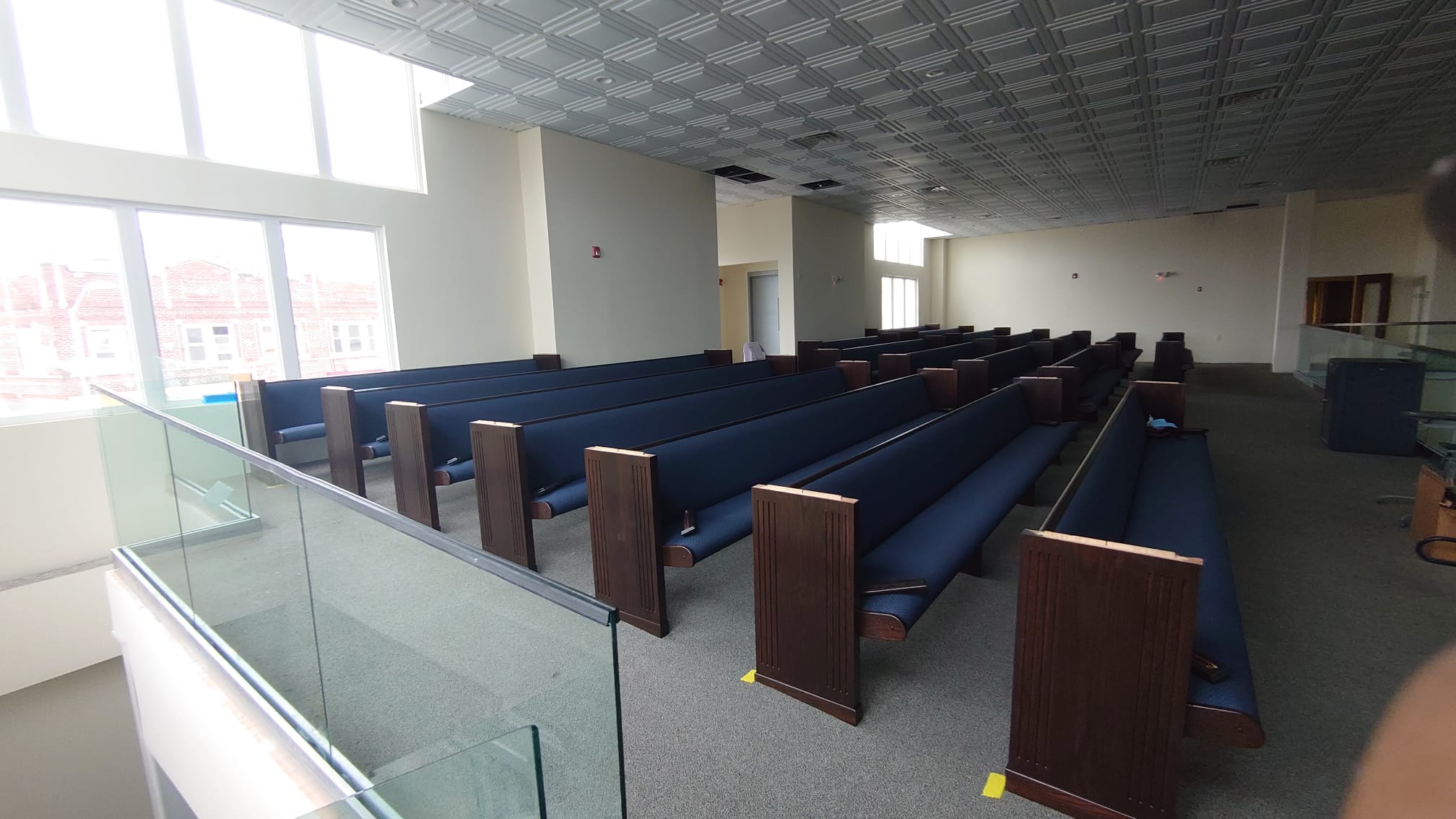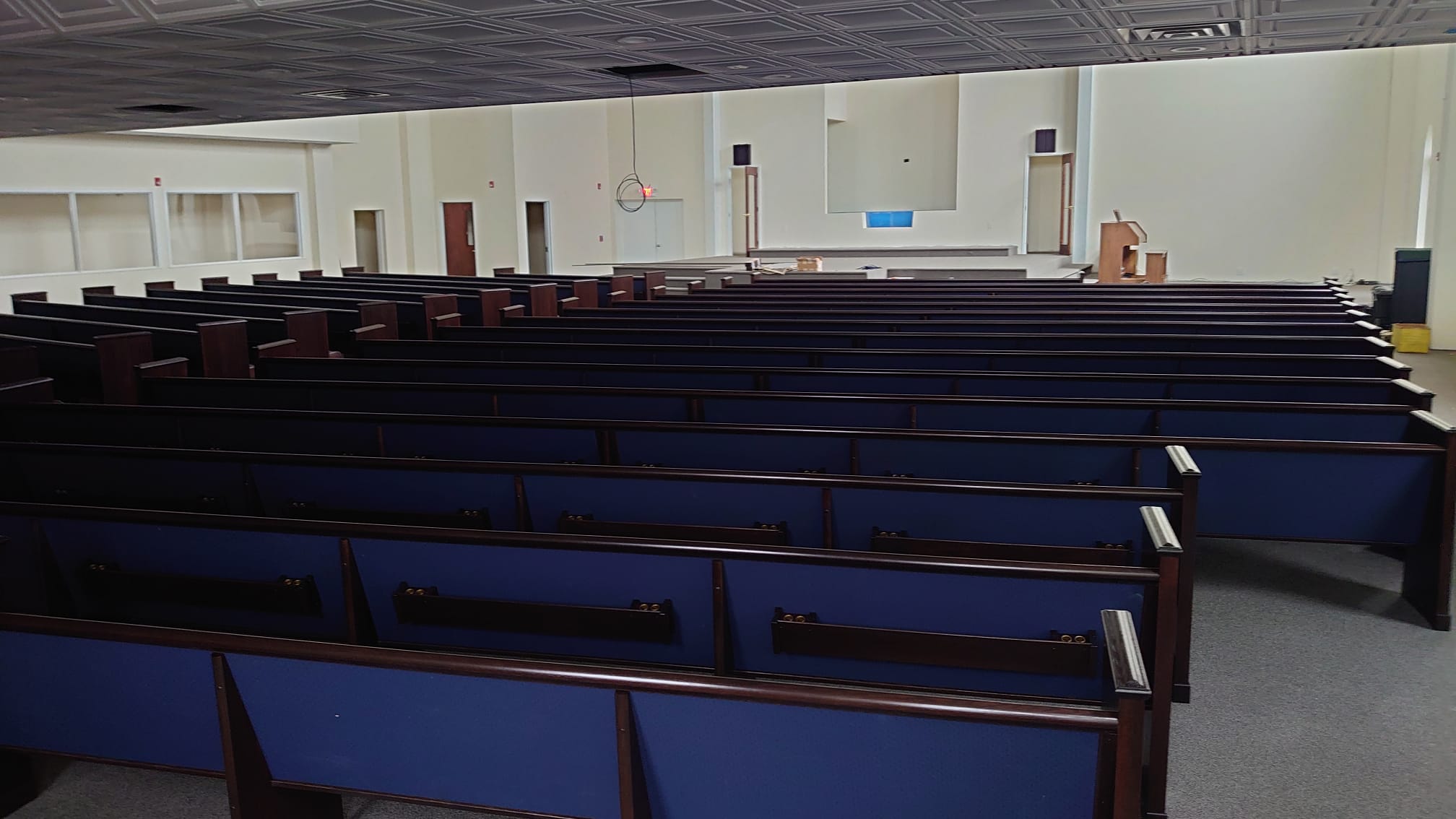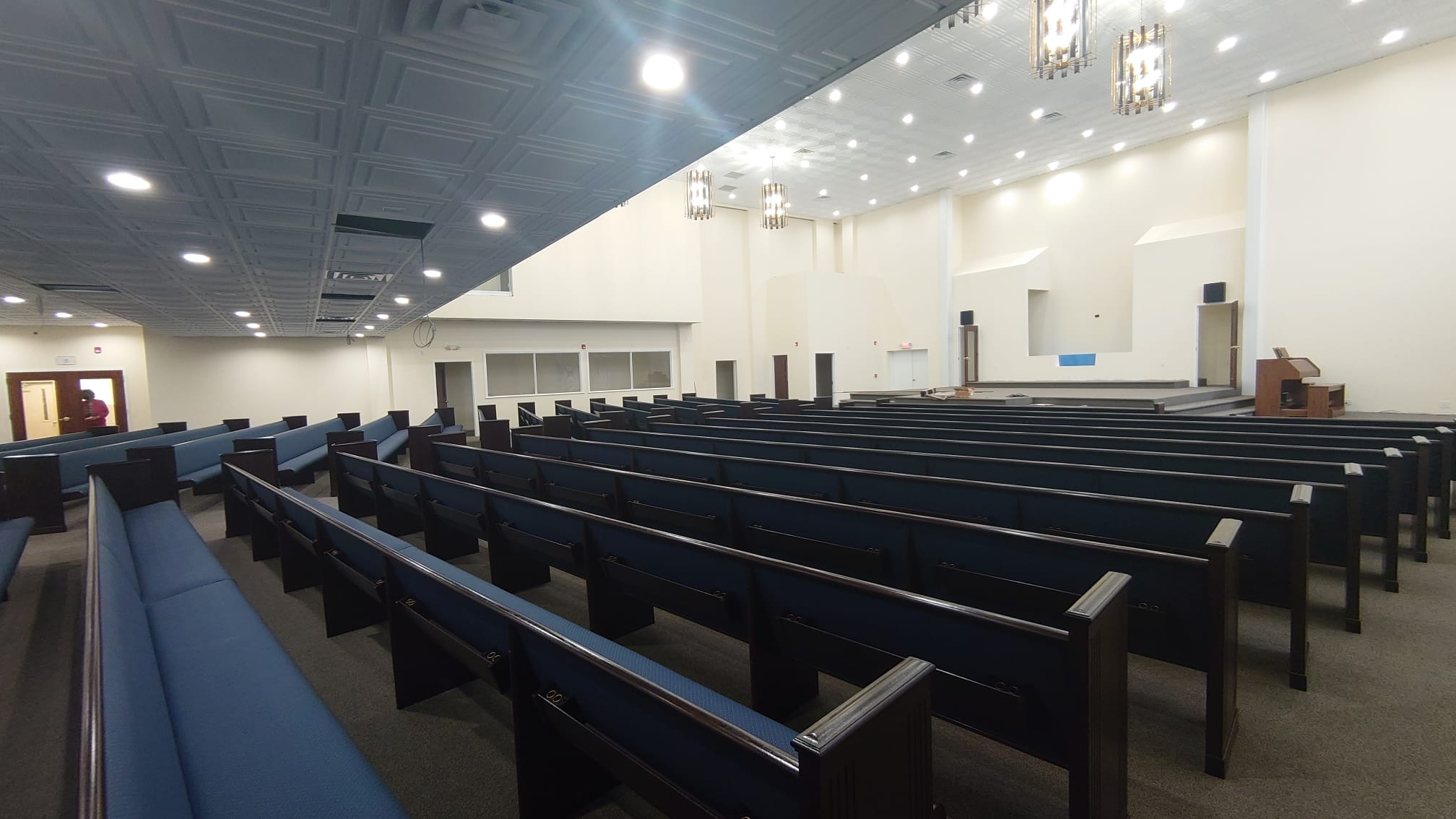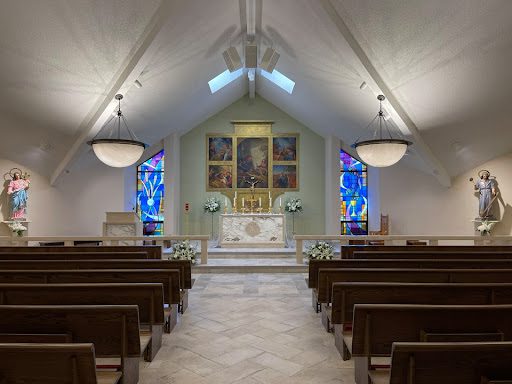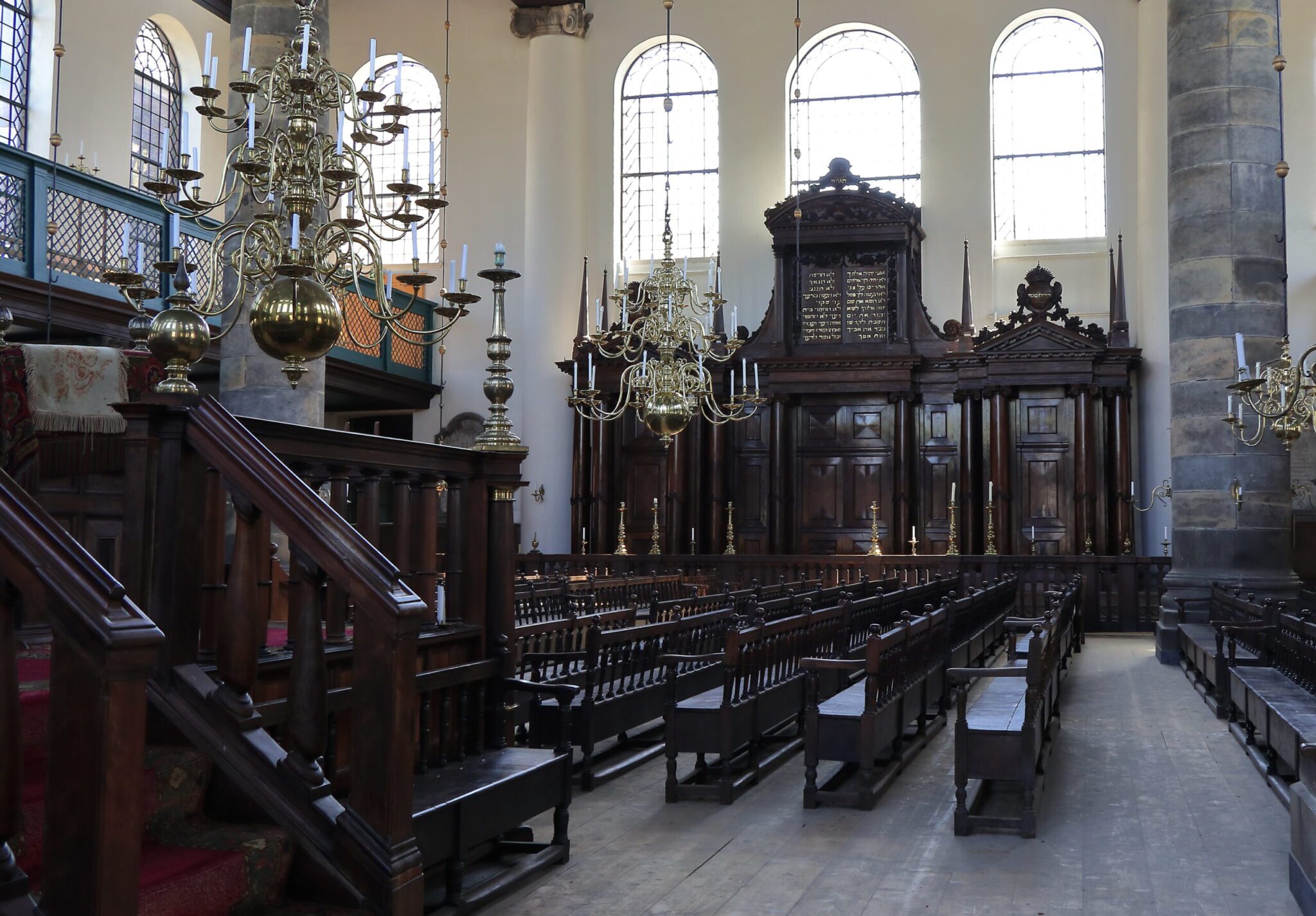
Synagogues have been integral to Jewish life for thousands of years, providing a place for worship, study, and community gathering. This article will explore the rich history of synagogue interior furniture from ancient times to the present day.
At New Holland Church Furniture, we offer a wide range of custom-crafted seating and worship furniture to suit the unique needs of any congregation. Our expert craftsmen use the highest quality materials and construction techniques to ensure that your synagogue has comfortable, stylish, and durable furniture for years. Don’t wait—get in touch with us today!
Synagogue Architecture: Reflecting Jewish Tradition and History
Synagogue architecture has varied greatly over time and across different Jewish communities. Each synagogue reflects the local Jewish community’s customs, traditions, and history, from ancient synagogues to contemporary designs.
Ancient Synagogues: A Window into Jewish Life
The oldest synagogue in the world is the Ben Ezra Synagogue in Cairo, Egypt. Since at least the 9th century, a synagogue has stood on this site and served as a popular place of worship for Egypt’s Jewish community. A mass exodus to Israel relocated many of the Jews who used this house of worship, but it is still operating as a museum and tourist attraction today.
Another ancient synagogue is located in the ancient Jewish community of Beit She’an Valley in Israel. This synagogue, Beit Alpha, was discovered in 1929 when members of the Kibbutz Beit Alpha were digging irrigation channels for their fields. Later excavations revealed the remains of some houses, indicating that this synagogue was part of the Byzantine period of the 5th and 6th centuries.
Excavations of this synagogue and other ancient synagogues have provided valuable insights into Jewish life and culture during this period. In addition to the bimah, ancient synagogues often featured other furniture pieces, such as Torah Arks, ritual baths, and women’s galleries. These artifacts offer a glimpse into the daily life of the Jewish community and the importance of communal worship and study.
Synagogue Interiors: A Feast for the Senses
Contemporary synagogues feature various interior designs and decorations, reflecting the diversity of Jewish communities worldwide. Each synagogue interior uniquely expresses Jewish artistic and cultural expression, from stained glass windows in Ashkenazi synagogues to ornate wood carvings in Sephardi synagogues.
Synagogues are known for the Torah scrolls, a hand-written copy of the first five books of the Hebrew Bible. It is written in Hebrew with 42 lines of text per column. A specified section is read every Sabbath. These five books, originally written by Moses, are kept inside an ark or cabinet called Aron Kodesh or the Torah Ark. It’s one of their most important features and reminds worshippers that they have a special relationship with God.
Synagogue Design Around the World
The wealth of Jewish culture and its evolution is reflected in synagogues’ varied designs, features, and furniture worldwide. In Eastern Europe, synagogues often featured elaborate wood carvings and stained-glass windows, reflecting the rich artistic tradition of the region.
Synagogues in North Africa boasted whitewashed walls with pared-back and beautiful designs characteristically reflective of the desert terrain. On the other hand, synagogues in the Middle East showcased intricate tile work alongside distinct geometric patterns.
In Western Europe and North America, blending into the environment was necessary for synagogues to prevent unwanted attention. Thus, many of these places are designed with more conservative styles and decorations than other regions.
Symbolism in Synagogue Interior Furniture
The synagogues’ interior furnishings and design have been vital to Jewish life and culture for thousands of years. Every piece has a special purpose that helps commemorate God’s ongoing presence in the Jewish community. From their traditional benches to ornate decorations, each object is imbued with spiritual significance for those inside these sacred spaces.
One of the most important objects in the synagogue is the eternal light, a lamp that hangs in front of the Torah Ark and is never allowed to go out. The eternal light is a reminder of the miraculously persistent western lamp of the menorah in the Temple in Jerusalem.
In the synagogue, a special object of importance is presented: the menorah. This candelabrum has seven branches and stands for universal enlightenment. There are also Hanukkah menorahs with nine branches, which signifies the miracle during Hanukkah when the oil in the Temple lasted for eight days. As it commemorates this miraculous event from the Maccabean revolt, its presence serves as a reminder that faith can bring light even in darkness.
Synagogue Design: From Small Congregations to the Largest Synagogue in the World
Synagogues differ in size and design, from humble ones held in rented premises to the grand Belz Great Synagogue of Jerusalem that can seat over 4,000 devotees. It is an awe-inspiring sight with a central bimah, intricate woodwork adornments, and its separate women’s gallery area.
Hebrew words and phrases are deeply embedded in synagogue decor, with inscriptions on walls, windows, and furniture to remind congregants of language’s role in Jewish life. These thoughtful additions help bring a feeling of spirituality into the space.
Denominational Differences in Synagogue Design
There are also denominational differences in synagogue design and furniture. Orthodox synagogues are typically designed with a classic look, featuring a central bimah and gender-segregated seating. On the contrary, Reform congregations often have an air of modernity while encouraging community involvement through open floor plans and mixed seating arrangements.
Synagogue Design Throughout History
Synagogue design followed suit as Jewish history, culture, and architecture shifted over the centuries. In the 18th century, a new synagogue model emerged with a central bimah encircled by seating, allowing worshipers to participate more actively during services. This type of layout enabled congregants to form an even deeper connection as they worshipped together.
In the 20th century, Frank Lloyd Wright designed the Beth Sholom Synagogue in Elkins Park, Pennsylvania, which featured a modernist design and a unique tent-like roof. This synagogue design veered away from the usual and highlighted how modern architecture is significant to the Jewish community.
Need Furniture for Your Synagogue’s Interior? Find a Rep Today!
For millennia, the synagogue has served as a cornerstone of Jewish existence, wherein interior furniture and design have played an integral role in culture. From old synagogues to modern-day revivals, tradition, history, and architectural changes can be seen through their evolution.
A synagogue’s striking beauty lies in the prominently featured holy symbols and heirlooms. Each piece, from sacred Torah scrolls to gentle Hebrew inscriptions, is an unforgettable reminder of God’s unmatched presence in Jewish life. Judaism’s vast history and culture are embedded within these adornments—a legacy symbolized by synagogues from all corners of the world.
When you need to refresh your synagogue’s interior or obtain furniture for a new build, turn to the old-world craftsmanship at New Holland Church Furniture. We will carefully respect the traditions and customs your synagogue holds dear, so you can rest assured that your shul, Temple, or synagogue has the best furniture available. Get in touch with one of our reps today to get started!
Resources:

